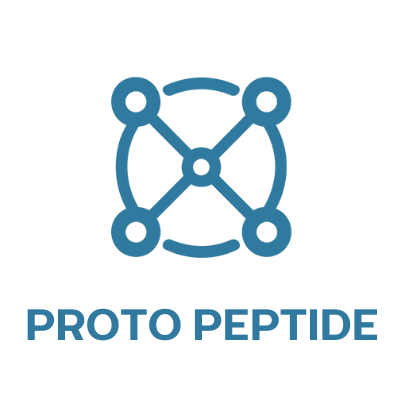Peptide Reconstitution Guide: Step-by-Step Instructions for Safe Handling
Proper peptide reconstitution is essential to maintain stability, sterility, and effectiveness for research applications. At Proto Peptide, we provide lab-grade peptides and this guide will walk you through the correct process to prepare them safely.
1. What is Peptide Reconstitution?
Reconstitution is the process of dissolving lyophilized (freeze-dried) peptide powder into a suitable solvent such as bacteriostatic water. Correct reconstitution ensures the peptide remains stable and sterile for use in research studies.
2. What You’ll Need
Before starting, make sure you have:
- Lyophilized (powder) peptide vial
- Bacteriostatic water (Hospira or equivalent)
- Alcohol wipes
- Sterile syringe and needle
- Our Reconstitution Calculator (for precise measurements)

Tip: Always work in a clean, controlled environment to maintain sterility.
3. Preparing Your Workspace and Vial
- Set up a clean, disinfected workspace before handling peptides
- Wash your hands or wear gloves
- Check the vial lid: Each peptide vial comes with a tamper-proof, sterile lid. Once removed, it cannot be replaced.

- Disinfect the top: Use an alcohol wipe to clean the vial’s rubber stopper before inserting the needle.
- Handle carefully: Avoid touching the needle or vial top to prevent contamination.
4. Adding the Bacteriostatic water
- Determine the required volume using our Reconstitution Calculator, which takes into account the peptide amount and desired concentration.
- Inject the bacteriostatic water slowly into the vial, aiming for the glass wall instead of directly on the powder. This prevents foaming or damage.
Tip: Our calculator allows you to adjust the bacteriostatic water amount between 1-3ml (1-3 full syringes if you are using a 1ml needle). The option of how much you want to dilute is up to you; however, for best results, aim to inject 10–30 diluted units on the syringe. Using less bacteriostatic water creates a more concentrated solution, which can be harder to measure accurately in the syringe. On the other hand, diluting with too much water increases the injection volume, which may cause a small lump at the injection site. Read our Subcutaneous Injection Guide for more information on proper injection methods.
5. How to roll/swirl your vial
Put the vial between your hands and gently roll it back and forth until the solution is dissolved. The liquid should be completely clear.

Storage After Reconstitution
- Short-term: Keep the vial in the refrigerator (2–8°C / 36–46°F).
- Long-term: For extended storage, freeze the vial at -20°C (-4°F) or lower.
Tip: Read our Peptide Storage Guide to help you store your peptides safely and maintain their integrity.
Why Proper Reconstitution Matters
- Maintains peptide sterility
- Prevents loss of potency
- Ensures accurate dosing for research purposes
- Reduces risk of contamination or degradation
Summary Checklist
✅ Use Hospira bacteriostatic water only
✅ Clean vial top with alcohol wipes before every use
✅ Follow Reconstitution Calculator for accurate volume
✅ Inject solvent slowly against the vial wall
✅ Refrigerate after reconstitution
✅ Label vials clearly
